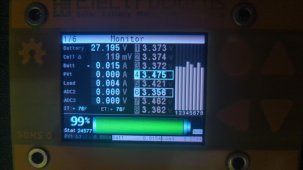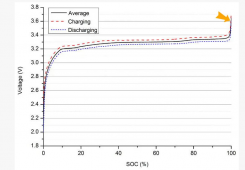Thersom1948
New Member
- Joined
- Apr 16, 2020
- Messages
- 60
In 2020 I built a off-grid system with EVE 280AH cells, Electrodacus, and Growatt 3000.
You can see my build details on this thread.
The entire purpose of this built was Emergency Backup power.
Since I have regular grid power in my house I do not use the system very often.
It has been sitting unused - no solar connected, mostly no loads connected for ~18 months. Every once in a while I'll use it for some small load for an hour or two.
The self discharge rate, according the Electrodacus, is about 1% every two weeks or so. Very slow.
Lately I noticed the cells don't stay as closely balanced as they used to.
-Used to consistently be 10-20mv delta Max
-Now consistently 75-150mv delta
I charged it to "100%" today just to see, and this is about 30 minutes after charge disconnect.
Will the cell balance start to diverge like this if the system is not used?
Do I need to disassemble and do a fresh top balance?

You can see my build details on this thread.
The entire purpose of this built was Emergency Backup power.
Since I have regular grid power in my house I do not use the system very often.
It has been sitting unused - no solar connected, mostly no loads connected for ~18 months. Every once in a while I'll use it for some small load for an hour or two.
The self discharge rate, according the Electrodacus, is about 1% every two weeks or so. Very slow.
Lately I noticed the cells don't stay as closely balanced as they used to.
-Used to consistently be 10-20mv delta Max
-Now consistently 75-150mv delta
I charged it to "100%" today just to see, and this is about 30 minutes after charge disconnect.
Will the cell balance start to diverge like this if the system is not used?
Do I need to disassemble and do a fresh top balance?




